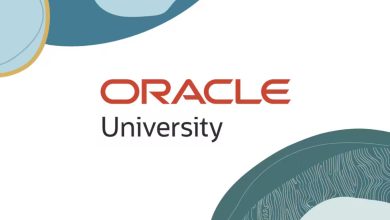Model Behaviour: The Right AI Fit for Businesses

By: Rahul Pradhan, VP Product and Strategy, Couchbase
With Microsoft introducing AI agents and Gartner listing agentic AI as a topic technology trend for 2025, the coming year signals a major surge in autonomous AI capabilities. These advanced agents will go beyond assistive tools like AI copilots, taking on complex tasks once thought impossible—such as identifying sales targets, optimising supply chains, and managing employee schedules.
To fully capitalise on these advancements, organisations must understand the differences among AI models, identify the best fit for their needs, and tackle integration challenges. By informing decisions in this way, companies can harness AI to not only enhance efficiency but drive strategic growth.
The future of work
The capabilities of generative AI are rapidly expanding. Where traditional applications like chatbots and copilots mostly offer guidance, newer autonomous agents can perform complex, multi-step tasks independently. These advanced systems, powered by agentic AI, are designed to manage outcomes on their own, taking over routine tasks and making decisions without human input. Gartner predicts that by 2028, at least 15% of day-to-day work decisions will be made autonomously through agentic AI, up from 0% in 2024.
Copilot models, on the other hand, work as a collaborative aid, keeping users in command. Copilot AI augments a person’s abilities by providing support, insights, or recommendations while leaving critical decisions and creative inputs to the human user. This model is ideal for situations where human expertise, nuanced judgment, and contextual understanding are indispensable, making AI an aid rather than an independent agent.
Automation vs assistance
The choice between agentic AI and copilot AI ultimately depends on how closely each model aligns with a business’s operational needs and strategic goals. This could mean automating processes to free up employees’ time or providing tools that support human-driven tasks. Each model offers distinct advantages suited to different environments, depending on a company’s level of automation readiness and focus.
For companies that would benefit from full automation to enhance efficiency in well-defined business workflows, agentic AI is an excellent choice. This model is ideal for areas where well-defined, rules-based workflows can benefit from real-time data analysis and decision-making, such as manufacturing, supply chain management, and data-driven operations. In these sectors, agentic AI can significantly reduce manual labour. By handling complex workflows autonomously, it allows employees to shift their focus toward more strategic, high-level activities.
Imagine an AI healthcare assistant that autonomously adjusts a patient’s treatment plan based on real-time data and alerts healthcare professionals to potential issues. Such proactive, intelligent systems could reduce readmissions and give healthcare providers more time to prioritise face-to-face patient interactions, improving patient outcomes.
On the other hand, businesses that rely heavily on human insight, creativity, or nuanced decision-making—like those in marketing, R&D, or customer experience—will likely gain more from a copilot AI model. This approach empowers users by streamlining and enhancing current workflows without taking full control.
For instance, a marketing-focused copilot could analyse customer data, uncovering trends and helping generate tailored content ideas, while a human marketer applies intuition and strategic insight to guide the content direction. This synergy between human expertise and AI-driven insights enables businesses to develop deeply personalised marketing strategies that resonate with their audiences on a meaningful level.
Navigating AI integration
For businesses, the ease with which AI can be incorporated into current systems is another crucial factor in choosing between Agentic and Copilot models.
Agentic AI, designed for full-scale automation, often requires considerable reconfiguration of existing systems and processes. Since it typically needs deep integration into an organisation’s data architecture, this model may demand custom development to align databases, software systems, and specific workflows. As a result, implementing agentic AI can be resource-intensive, involving significant time, cost, and effort.
What’s more, should a business want to jump into the AI future with these new agents, they’ll have to overcome the challenges posed by disparate data sources and optimised memory systems. The common approach to managing the memory requirements of AI agents relies on a complex web of standalone databases. However, this approach can negatively impact AI performance, leading to issues such as latency, data silos, and data sprawl. Businesses need to ensure they adopt integrated data management strategies that ensure seamless access to real-time information and enhance overall system performance.
Copilot models, alternately, provide a more streamlined path for adoption. These AI tools are designed to integrate smoothly with existing applications without overhauling systems, enhancing rather than replacing current workflows. By avoiding the need for extensive customisations or architectural overhauls, copilot AI allows businesses to experience the benefits of AI quickly and with minimal disruption to established systems. Copilots require less customisation, making them more accessible and flexible for a broader range of businesses – from startups to large enterprises.
The two approaches have distinct impacts on how businesses manage employee expectations. AI agents serve as replacements for existing workflows, which may necessitate a different approach to transitioning employees and adjusting expectations around automation. In contrast, copilots require careful change management to help users adapt to a tool that enhances their daily activities. Training and ongoing support can help users integrate copilot AI into their routines, building confidence in AI’s role as a supportive collaborator.
Time to choose
Both agentic and copilot AIs are reshaping industries, albeit with distinct impacts. Organisations must take a measured approach, aligning AI adoption with their current needs and future ambitions. With advances in AI technology accelerating, the choice between agentic AI and copilots will likely become a combination of mixed approaches to ensure a business can leverage AI to its advantage in a competitive, technology-driven landscape.




